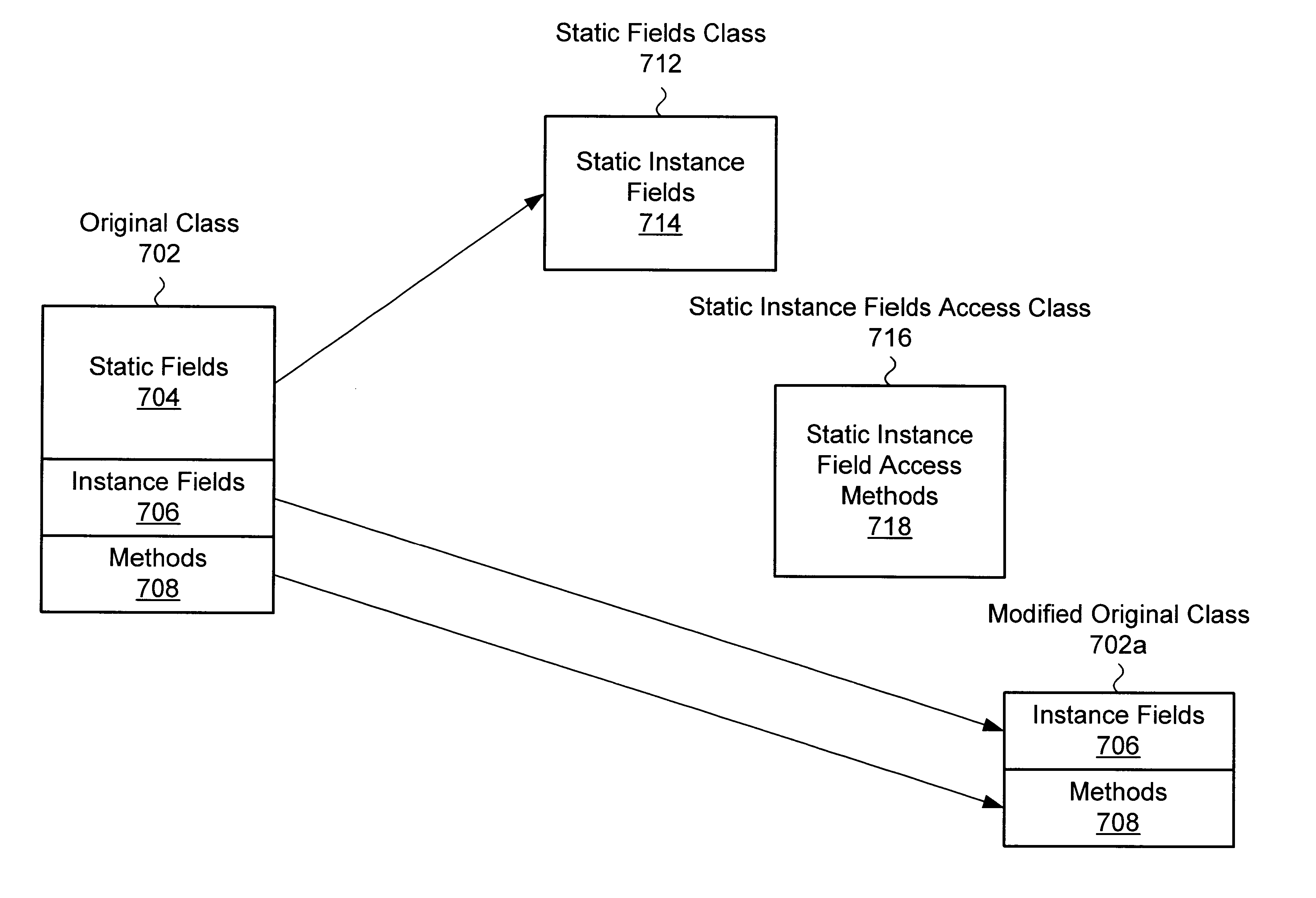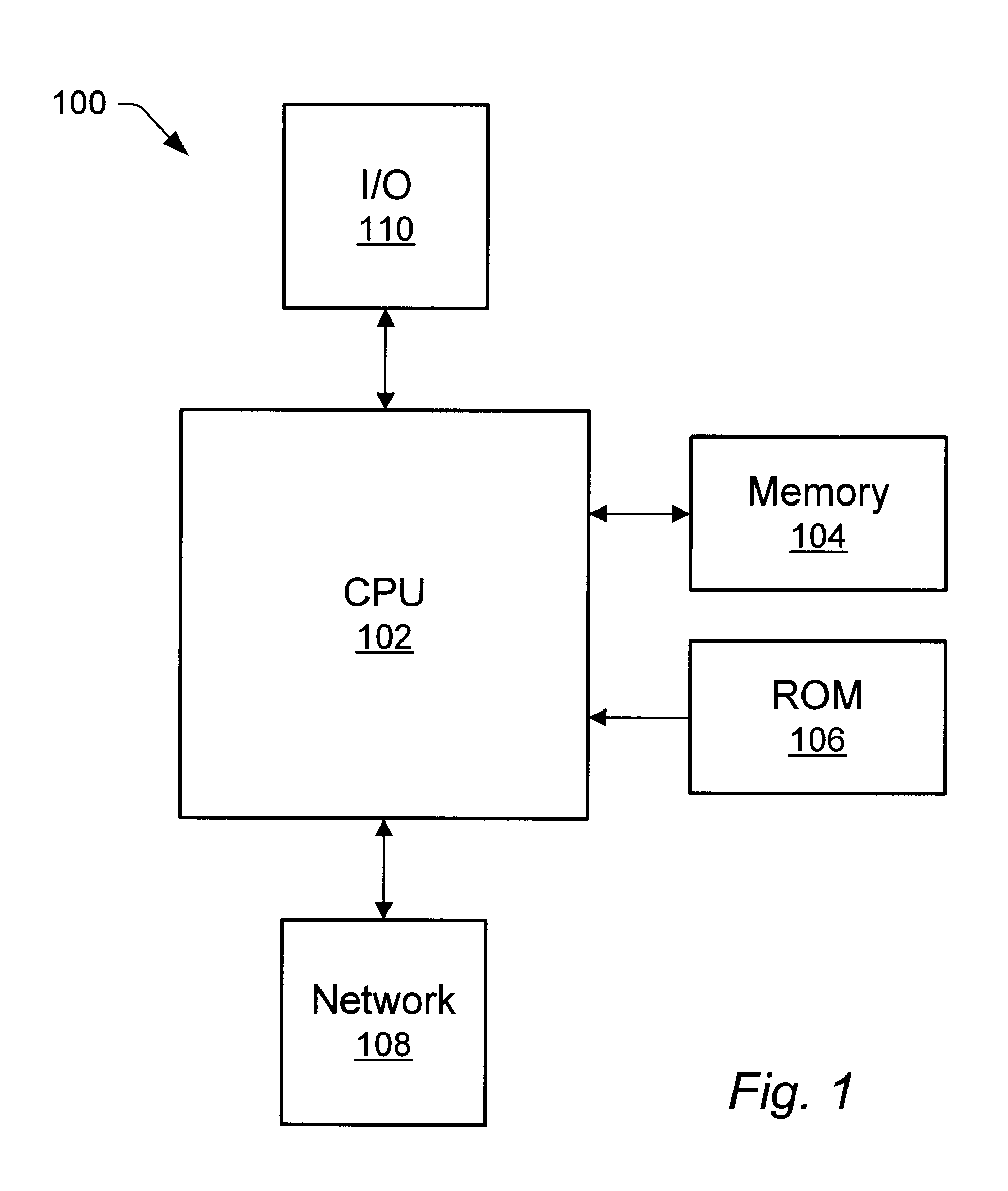Small memory footprint system and method for separating applications within a single virtual machine
a technology of small memory footprint and virtual machine, applied in the field of computer software, can solve the problems of poor scaling, high inter-application communication cost, and application not being able to prevent another application from performing its activities,
- Summary
- Abstract
- Description
- Claims
- Application Information
AI Technical Summary
Problems solved by technology
Method used
Image
Examples
Embodiment Construction
FIG. 1: A Typical Computer System
Turning now to the drawings, FIG. 1 is an illustration of a typical, general-purpose computer system 100 which is suitable for implementing the system and method for application isolation as disclosed herein. As discussed with reference to FIGS. 6 through 8, the system and method for application isolation may include providing multiple copies of static fields to isolate the execution of the applications, such that different applications cannot typically access the same static field.
The computer system 100 includes at least one central processing unit (CPU) or processor 102. The CPU 102 is coupled to a memory 104 and a read-only memory (ROM) 106. The memory 104 is representative of various types of possible memory media: for example, hard disk storage, floppy disk storage, removable disk storage, or random access memory (RAM). The terms "memory" and "memory medium" may include an installation medium, e.g., a CD-ROM or floppy disk, a computer system me...
PUM
 Login to View More
Login to View More Abstract
Description
Claims
Application Information
 Login to View More
Login to View More - R&D
- Intellectual Property
- Life Sciences
- Materials
- Tech Scout
- Unparalleled Data Quality
- Higher Quality Content
- 60% Fewer Hallucinations
Browse by: Latest US Patents, China's latest patents, Technical Efficacy Thesaurus, Application Domain, Technology Topic, Popular Technical Reports.
© 2025 PatSnap. All rights reserved.Legal|Privacy policy|Modern Slavery Act Transparency Statement|Sitemap|About US| Contact US: help@patsnap.com



